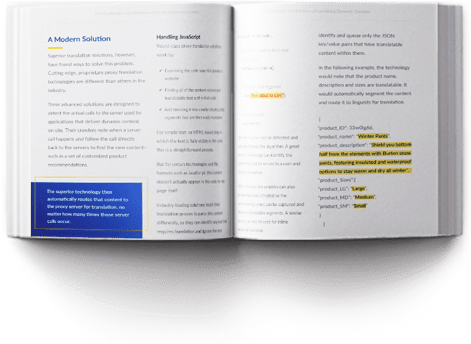Today's websites lean heavily on personalising the user experience by recommending relevant content.
Most B2B and B2C websites employ custom modules that analyse users' behavior to serve up recommended items from product catalogues, present customised promotions and more.
But localising these highly effective, personalised experiences for international customers can be challenging-unless you understand the technical complexities of website translation and choose the right solution.
In this e-book, you’ll learn:
- The standard approach to handling website translation
- Modern solutions to localising dynamic content
- How to handle dynamic content powered by JavaScript, JSON and XML
- How to integrate translation technologies with APIs
This book's insights can help your company avoid pitfalls, unnecessary time and expense, and other challenges posed by underdeveloped website localisation approaches.

This e-book covers:
- Identifying dynamic content
- Understanding the translation of dynamically generated page content
- Choosing the right vendor for website localisation
Remember: Poorly translated websites may make a worse impression on consumers than websites that haven’t been translated at all. Make sure you’re giving your global consumers the tailored experience they expect.
Download the e-book